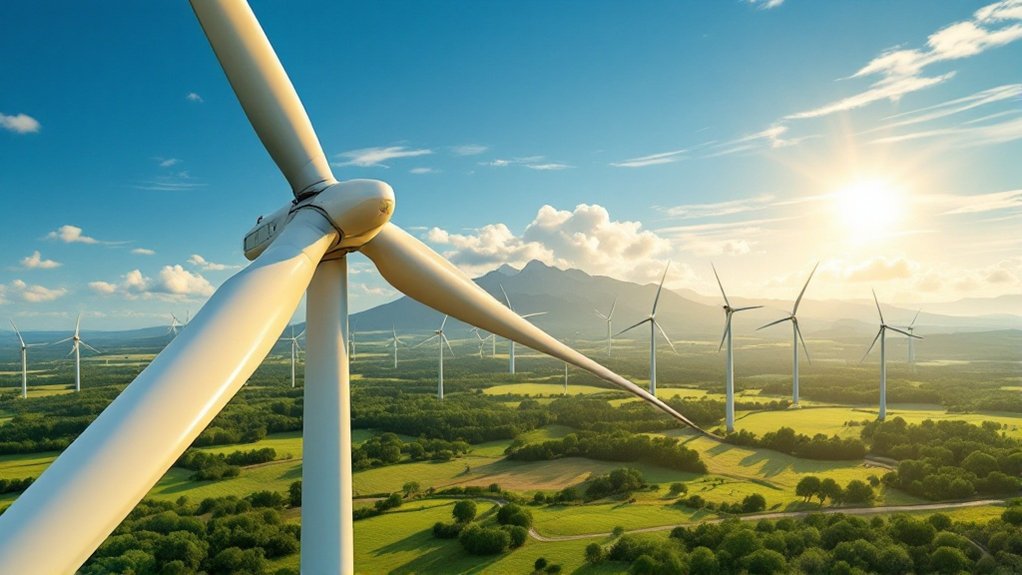
Breaking Down the Best Wind Turbine Technologies Today
The landscape of wind turbine technology has evolved markedly, showcasing a variety of innovations aimed at improving efficiency and sustainability. From vertical and horizontal axis turbines to advanced offshore designs, each type offers distinct advantages. Emerging solutions like floating turbines and smart systems further enhance the potential of wind energy. Understanding these technologies is vital for grasping their impact on the renewable energy sector and the future of energy production. What lies ahead in this dynamic field?
Vertical Axis Wind Turbines: An Overview
Vertical Axis Wind Turbines (VAWTs) present a unique approach to harnessing wind energy. Unlike their horizontal counterparts, VAWTs feature a vertical design that allows them to capture wind from any direction. This omnidirectional capability makes them particularly advantageous in urban environments, where wind patterns can be unpredictable. Additionally, VAWTs tend to have a lower center of gravity, which enhances stability and reduces structural strain, making them suitable for smaller installations. Maintenance is simplified due to their ground-level components, facilitating easier access. While generally less efficient than horizontal axis turbines in ideal conditions, VAWTs demonstrate potential in specific applications, particularly where space is limited or aesthetic considerations are paramount. Their innovative design continues to attract interest in renewable energy discussions. Furthermore, investments in renewable energy are expected to continue growing, which may enhance the development of VAWT technologies.
Horizontal Axis Wind Turbines: The Industry Standard
While various wind turbine designs exist, Horizontal Axis Wind Turbines (HAWTs) remain the industry standard due to their efficiency and performance in harnessing wind energy. Characterized by their two or three blades mounted on a tower, HAWTs operate efficiently when aligned with the wind direction. This design enables them to capture wind energy effectively, resulting in higher energy output compared to other turbine types. HAWTs are scalable, making them suitable for both small and large installations, and they have become the preferred choice for onshore wind farms worldwide. Their established technology, combined with ongoing advancements in materials and aerodynamics, continues to enhance their reliability and cost-effectiveness, solidifying HAWTs’ position as the leading technology in the wind energy sector. Moreover, reducing energy consumption is a fundamental benefit that contributes to a more sustainable future.
Offshore Wind Turbines: Harnessing Oceanic Winds
Offshore wind turbines present significant advantages, including higher wind speeds and reduced visual impact compared to their onshore counterparts. Recent technological innovations have further enhanced their design, allowing for increased efficiency and reliability in harnessing oceanic winds. This discussion will explore these benefits and advancements shaping the future of offshore wind energy. Additionally, the hybrid work models emerging in the workforce may lead to increased demand for sustainable energy solutions, including offshore wind power.
Advantages of Offshore Turbines
Harnessing the power of oceanic winds offers numerous advantages for wind turbine technology, particularly through offshore installations. Offshore wind turbines benefit from consistently higher wind speeds compared to their onshore counterparts, leading to enhanced energy production. The expansive ocean space allows for larger turbine sizes and configurations, maximizing efficiency. Additionally, offshore sites typically face fewer space constraints, reducing competition with other land uses. The potential for greater energy generation also contributes to lower overall costs per megawatt-hour. Moreover, offshore installations can minimize noise and visual pollution for coastal communities, making them more socially acceptable. Overall, offshore turbines represent a promising avenue for advancing renewable energy and achieving sustainability goals.
Technological Innovations in Design
As the demand for renewable energy continues to rise, innovative designs in offshore wind turbine technology are emerging to enhance efficiency and performance. Advances in materials science have led to lighter, more durable turbine blades that can capture more wind energy while reducing structural strain. Floating turbine platforms are gaining traction, allowing installations in deeper waters where wind speeds are higher and more consistent. Enhanced control systems utilizing artificial intelligence optimize energy output by adjusting blade angles in real-time to changing wind conditions. Additionally, integrated energy storage solutions are being developed to guarantee a steady power supply, even during calm periods. These technological innovations position offshore wind turbines as a pivotal component in the shift to sustainable energy sources.
Small-Scale Wind Turbines: Power for Homes and Businesses
Small-scale wind turbines offer an efficient solution for residential and commercial energy needs, providing significant benefits such as reduced electricity bills and environmental sustainability. Understanding the installation process and maintenance requirements is essential for maximizing their effectiveness. This discussion will explore the advantages of small turbines and provide practical tips for their upkeep. Additionally, integrating mindfulness practices into the installation process can enhance focus and presence, ensuring that each step is executed with care and precision.
Benefits of Small Turbines
While traditional energy sources continue to face scrutiny for their environmental impact, small-scale wind turbines present an appealing alternative for homes and businesses seeking sustainable power solutions. These compact systems harness wind energy efficiently, providing a renewable source of electricity that reduces reliance on fossil fuels. Their installation can lead to significant cost savings on energy bills over time. Additionally, small turbines can enhance energy independence, allowing users to generate their own power. They are often eligible for various incentives and rebates, making them financially attractive. Moreover, their relatively small footprint allows for installation in diverse locations, including urban and rural settings. Ultimately, small-scale wind turbines contribute positively to both individual energy needs and broader environmental goals.
Installation and Maintenance Tips
When considering the installation of small-scale wind turbines, proper planning and maintenance are essential for maximizing energy output and ensuring longevity. Site assessment is critical; turbines should be placed in areas with consistent wind flow, away from obstacles like trees and buildings. Additionally, ensuring compliance with local zoning regulations is necessary to avoid legal complications. During installation, secure mounting and proper electrical connections are crucial for safety and efficiency.
Routine maintenance should include regular inspections for wear and tear, checking the integrity of blades, and ensuring the tower remains stable. Lubrication of moving parts and monitoring the electrical system can prevent costly repairs. By adhering to these guidelines, homeowners and businesses can optimize their wind turbine performance and lifespan.
Floating Wind Turbines: Expanding Horizons
Floating wind turbines represent a transformative advancement in renewable energy technology, allowing for the harnessing of wind power in deeper waters previously deemed inaccessible. Unlike traditional fixed-bottom turbines, floating designs utilize buoyant platforms that can be anchored to the seabed, enabling installation in locations with higher and more consistent wind speeds. This innovation not only expands the potential for offshore wind farms but also minimizes environmental impacts on coastal ecosystems. As technology continues to evolve, floating wind turbines offer significant promise for increasing global energy capacity while reducing reliance on fossil fuels. Collaborative research and development efforts are essential to optimize these systems, ensuring they are economically viable and efficient in harnessing the power of the wind. Embracing minimalism in energy consumption can further enhance the benefits derived from these technologies.
Hybrid Wind Turbines: Combining Technologies for Efficiency
Hybrid wind turbines represent a significant evolution in wind energy technology by integrating multiple energy generation methods to enhance efficiency and reliability. These systems often combine traditional wind turbines with solar panels or other renewable energy sources, allowing for a more consistent energy output regardless of fluctuating wind conditions. By harnessing diverse energy inputs, hybrid turbines can operate effectively in various environments, maximizing energy capture across different weather patterns. Additionally, this integration reduces reliance on a single energy source, improving overall system resilience. The combination of technologies also facilitates better energy storage solutions, allowing excess energy to be stored for later use. As a result, hybrid wind turbines are emerging as a promising solution for meeting increasing energy demands sustainably.
Smart Wind Turbines: Integrating IoT for Enhanced Performance
Smart wind turbines are increasingly incorporating IoT sensors and analytics to optimize their performance. These technologies enable real-time data collection and analysis, facilitating enhanced decision-making processes. Additionally, predictive maintenance algorithms help identify potential issues before they escalate, ensuring greater efficiency and reliability in wind energy generation.
IoT Sensors and Analytics
How can the integration of IoT sensors and analytics revolutionize the performance of wind turbines? The deployment of IoT sensors enables real-time monitoring of various turbine parameters, such as wind speed, temperature, and vibrations. This data collection facilitates enhanced decision-making and operational efficiency. By analyzing this information, operators can optimize energy output and adapt to changing environmental conditions. Additionally, IoT analytics provide insights into turbine performance trends, helping to identify inefficiencies or anomalies. This proactive approach enables operators to fine-tune settings, thereby maximizing energy production. The seamless connectivity of IoT systems also supports remote monitoring and diagnostics, reducing the need for physical inspections. Overall, IoT sensors and analytics represent a significant advancement in the management and optimization of wind turbine technology.
Predictive Maintenance Algorithms
As the wind energy sector increasingly embraces technological advancements, predictive maintenance algorithms have emerged as a game-changing component in the enhancement of turbine performance. By leveraging data collected from IoT sensors, these algorithms analyze patterns and predict potential failures before they occur. This proactive approach minimizes downtime and enhances operational efficiency. Additionally, it enables operators to schedule maintenance during ideal periods, reducing costs associated with unplanned repairs. The integration of machine learning techniques also refines these predictions, allowing for continuous improvement in maintenance strategies. Ultimately, predictive maintenance algorithms not only extend the lifespan of wind turbines but also contribute to more sustainable energy production, making them an essential aspect of modern wind farm management.
Advanced Materials in Wind Turbine Design
While traditional materials have long been the backbone of wind turbine design, the integration of advanced materials is revolutionizing the industry by enhancing performance and durability. Innovations such as carbon fiber composites and advanced alloys are lightweight yet robust, allowing for larger, more efficient blades that can capture more wind energy. These materials also exhibit superior fatigue resistance, extending the lifespan of turbines and reducing maintenance costs. Additionally, the use of smart materials, which can adapt to environmental conditions, further optimizes turbine efficiency. This shift not only improves energy output but also contributes to sustainability by reducing the overall ecological footprint of wind energy production. As research progresses, the role of advanced materials will become increasingly essential in the ongoing evolution of wind turbine technology.
Energy Storage Solutions for Wind Power
Energy storage solutions are essential for maximizing the effectiveness of wind power, particularly given the intermittent nature of wind energy generation. Various technologies have emerged to enhance the reliability of wind energy, with battery storage systems being the most prevalent. Lithium-ion batteries, known for their efficiency and rapid response times, allow for the quick deployment of stored energy during peak demand. Additionally, pumped hydro storage and compressed air energy storage are viable alternatives that can store energy for longer durations. These systems mitigate fluctuations in wind output, ensuring a stable energy supply. By integrating energy storage solutions, wind power can become a more dependable component of the overall energy grid, facilitating a shift towards a more sustainable and resilient energy future.
Future Trends in Wind Turbine Technology
The future of wind turbine technology is poised for significant advancements that promise to enhance efficiency and sustainability. Innovations in materials, such as lighter and stronger composites, are expected to increase turbine performance while reducing costs. Moreover, the integration of artificial intelligence and big data analytics will optimize maintenance schedules and improve energy forecasting. Offshore wind farms are anticipated to grow, utilizing larger turbines that can capture more wind energy in deeper waters. Additionally, hybrid systems combining wind and solar technologies will likely emerge, maximizing renewable energy output. Finally, advancements in energy storage solutions will facilitate better integration of wind power into the grid, addressing intermittency issues and paving the way for a more resilient energy future.
Frequently Asked Questions
How Do Wind Turbines Impact Local Wildlife and Ecosystems?
Wind turbines can considerably affect local wildlife and ecosystems. They may pose risks to birds and bats through collisions, while their installation can disrupt habitats, alter migration patterns, and influence local flora and fauna interactions.
What Are the Maintenance Costs Associated With Wind Turbines?
Maintenance costs for wind turbines can vary considerably, generally ranging from $30,000 to $50,000 annually per turbine. This includes inspections, repairs, and component replacements, which are essential for ensuring optimal performance and longevity.
How Long Do Wind Turbines Typically Last?
Wind turbines typically last between 20 to 25 years, depending on factors such as design, maintenance, and environmental conditions. Regular upkeep can extend their operational lifespan, maximizing energy production and overall efficiency throughout their service life.
What Is the Noise Level of Different Wind Turbine Types?
The noise level of wind turbines varies by type, generally ranging from 35 to 50 decibels. Larger turbines tend to be quieter due to advanced design, while smaller models may produce more noticeable sound during operation.
How Do Wind Farms Affect Property Values in Nearby Areas?
The impact of wind farms on nearby property values varies considerably. Some studies indicate a decrease in value due to perceived noise and visual intrusion, while others suggest minimal or even positive effects, depending on local circumstances.
Conclusion
In summary, the landscape of wind turbine technology is continually evolving, driven by innovations that enhance efficiency and sustainability. From vertical and horizontal axis turbines to cutting-edge floating designs and smart systems, each advancement amplifies the potential of wind energy. The integration of advanced materials and energy storage solutions further solidifies wind power’s role in the renewable energy sector. As these technologies progress, they promise to play an essential role in achieving a sustainable energy future.



